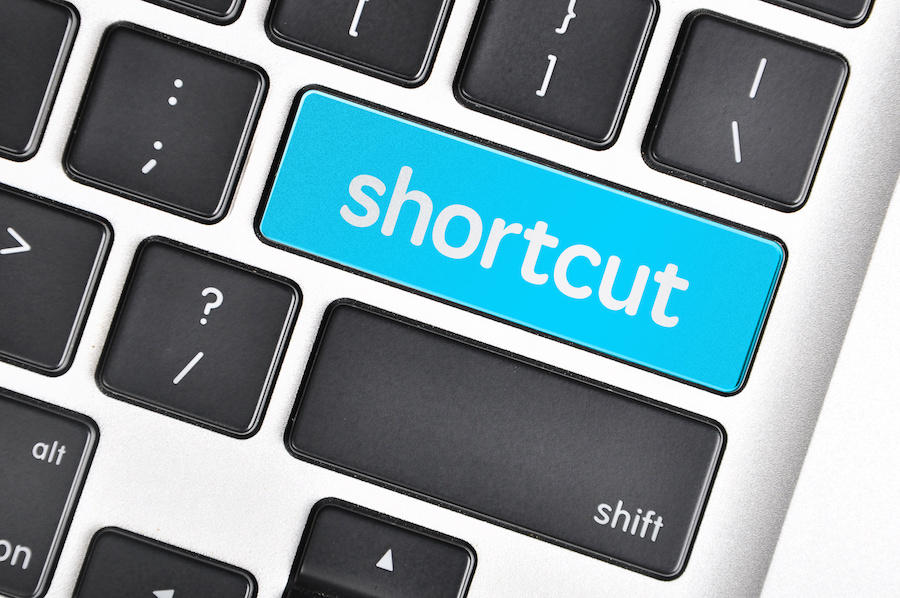As a wedding photographer, the time you have to work on your business is valuable. Though post production is a part of your photography workflow, it is not necessary for you to spend hours on your images. Integrating Lightroom into your workflow is essential to limiting the amount of time you dedicate to post production. There are many photography workflow Lightroom tricks that we have shared with you, from basic tips to advanced tips. Today, we want to focus on Lightroom shortcuts.
Lightroom Shortcuts
In our Online Training: Lightroom Shortcuts and Speed Tips with Jared Platt, he revealed shortcuts every Lightroom user needs to adopt in order to spend a minimal amount of time working on images. Here are the top Lightroom shortcuts that will speed up your wedding photography Lightroom workflow.

1. Utilize keystrokes
When you shoot a wedding, you have hundreds of images to work on. After outsourcing color correction to digital photo editing services, like ShootDotEdit, it is time to add your unique photography style to each of your images. It can become time-consuming to use the mouse to click through each of the buttons necessary to navigate through Lightroom’s variety of modules. By minimizing mouse clicks and utilizing Lightroom keyboard shortcuts, you will have quicker access to manage your photos as well as navigate through and work in the various modules.
For example, if you want to toggle between viewing images in different modules, click the D key to see images in the Develop module and then G to see the images in the Library Grid view. Take a look at this comprehensive list of keyboard shortcuts you can learn to minimize your Lightroom time.
2. Understand auto-sync
Using auto-sync with your images can increase the speed in your workflow. With auto-sync, you are able to choose several images at once and apply specific corrections to that batch of images. By using the keyboard shortcut Command + Option + S, the corrections will be applied to all of your highlighted images.
This is a great Lightroom shortcut to use on a large section of images that were taken with the same lighting conditions and camera settings, such as family formals. If you sync all of your images and decide to change an individual image, you can quickly go into the Develop module and alter the sliders for that specific shot.
Related: How to Edit Wedding Photos – ShootDotEdit’s expert tips – learn more now!
3. Master Develop module shortcuts
As you are adding your unique style to images in the Develop module, continue to use keystrokes as much as possible! To toggle between some of the basic adjustments, such as exposure and contrast, use the comma and period key to move up and down through these adjustments.
As you have one of the adjustments selected, rather than using the mouse to move the slider left and right to change how much that edit is applied, utilize the plus and minus keys to alter the slider.
To move the slider in larger increments, hold the shift key along with the plus and minus keys. All of your adjustments can be done without touching the mouse.
4. Use the Painter Tool
After you have organized your images, use the painter tool (the icon that resembles a spray can) to add keywords to your images. This option works best in the Library Grid View and helps you keyword images as quickly as possible. Simply click on the first image you want to keyword and then keep the mouse pressed over each additional image you want that keyword to be applied to.
The painter tool is also great to use for adding your style to a batch of images. If you want certain images to be black and white, highlight them, click on the painter tool, and select your black and white style.
5. Customize Your Shortcuts
If there is an action that you are constantly doing in Lightroom but there is no keystroke listed for it, you can actually create one. By going to your Keyboard within System Preferences, you can create shortcuts for any program. Along with this, you can change any default keystroke to be something else that is easier for you to remember.
You will automatically create habits to use Lightroom shortcuts when you repeatedly perform these actions. The time you spend in Lightroom will help you create a faster workflow for your business. To learn advanced Lightroom tips from Jared Platt, access our Online Training: Advanced Lightroom Skillsets by clicking the banner below!





Leave a comment